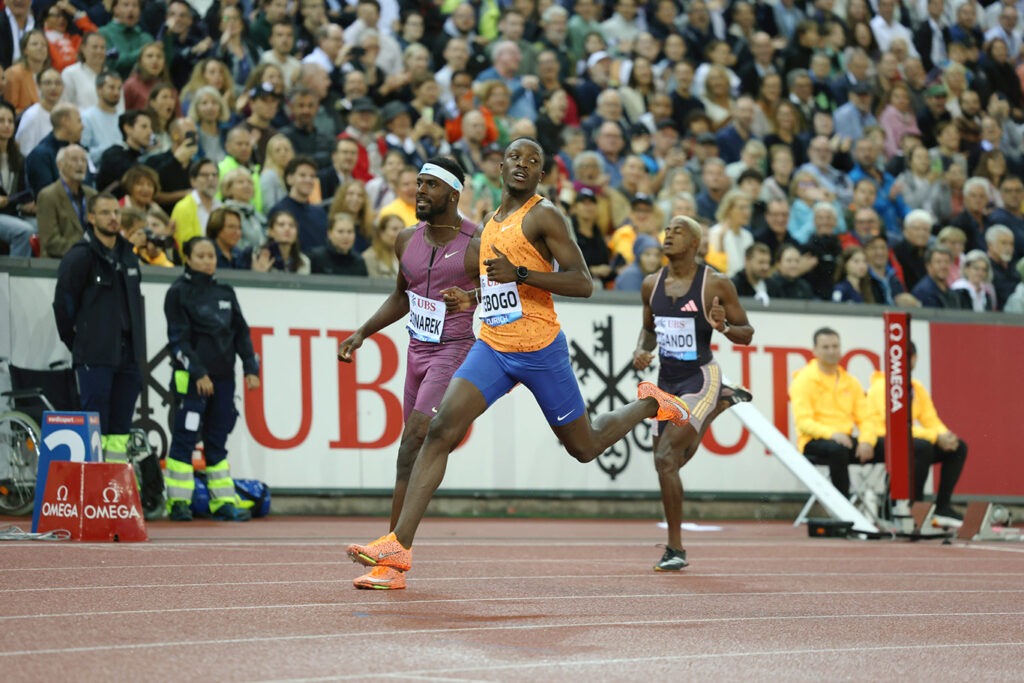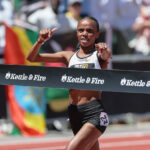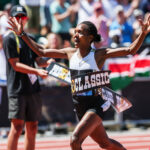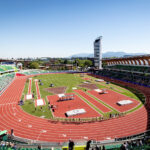Diamond League head Petr Stastny said that he welcomed competition from new ventures like Grand Slam Track, but noted that the two organizations have little contact as conflicts have emerged in the upcoming outdoor track schedules.
In a media session on Friday that covered a range of topics, Stastny was clear that competition from other events was healthy for the sport but the 16th season of Diamond League will have dates that overlap with Grand Slam Track.
“Competition is good in many ways,” Stastny said. “We do welcome these new projects in general. We do not welcome date clashes, which unfortunately seem to be happening in ’25. The roster of athletes is fairly big, but it’s not unlimited, so big clashes are not in favor of the organizers nor the athletes.”
Grand Slam Track will hold its inaugural meet in Kingston, Jamaica on April 4 to 6 — before the Diamond League opener on April 26 in Xiamen, China — but a Grand Slam Track event in Miami on May 2 to 4 will conflict with Diamond League’s second meeting on May 3 in Shanghai.
The schedule clash reflects how busy outdoor season will be in 2025, but Stastny alluded that communication between the two leagues has been virtually non-existent.
“We don’t approach others and they don’t approach us,” Stastny. “We feel it could be done but we don’t feel it’s on us to ask others when to put on their dates.”
The final Grand Slam Track showcase in Los Angeles on June 27 to 29 falls on the same day as USA Track and Field’s New York Grand Prix — to be held o June 29 and posing another conflict on the calendar.
However, Stastny said that Diamond League has kept a tight relationship with World Athletics, shared calendars — and changes — and even made concessions for the world outdoor championships when the sport shifts to Tokyo in September.
“We support the new calendar. The champions [of Diamond League] will get a wild card to Tokyo so it creates a narrative through the season.”
A wild card for all 32 Diamond League winners is an incentive for athletes to have an easier path to the World Athletics Championships in Tokyo and the Diamond League season will conveniently wrap in Zurich on August 27 and 28.
Still, the presence of the Michael Johnson-led Grand Slam Track has loomed for months after the league boasted significantly higher payouts to athletes and engaging matchup after the league was announced in early 2024.
The new venture will give $100,000 to event winners, with eight place receiving $10,000, easily outpacing Diamond League cash prizes. And it’s believed the cash figures in Johnson’s league were a major factor in attracting top talent like Sydney McLaughlin-Levrone, Gabby Thomas, Cole Hocker, Josh Kerr and Grant Fisher, among others.
Diamond League winners receive $10,000 and up to $30,000 at the season final, while under the new Diamond+ events those payouts rise to $20,000 and $50,000 in the final meet.
Stastny denies that the Grand Slam Track payout structure seemingly forced Diamond League to boost it’s own prize format.
“Staging an athletics competition in the way we do requires a big investment,” Stastny said. “Since we were founded, or introduced, in 2010 we have handed out close to $200 million to athletes.”
He added, “Our prize money increase is not a reaction to any new project. We knew five years ago we would raise the prize money in 2025.
Diamond League, which was founded in 2010, will see a $9 million prize money increase in 2025.
“It’s good to see athletes getting more opportunities to earn more income,” Stastny said. “Being a top athlete needs lots of focus, discipline and practise and they deserve to be paid well.”
Outside of the tight outdoor track and field schedule and new leagues on the horizon, Stastny addressed some of the changes fans will immediately notice in the upcoming season, like how the meets will be produced for a worldwide audience.
Infront replaces IMG as Diamond League’s broadcast production arm and for fans in the United States, a FloTrack subscription will be the only way to view this season’s meets. That means $150 upfront for a yearly plan or $29.99 per month to watch the events, a pricey option in landscape where viewers are already paying for other streaming service that offer more for significantly cheaper.
“Of course, we would want to be on free to air throughout, but if you have 32 to 33 hours of programming over the season then it’s not easy to position that live in an attractive time slot,” Stastny said. “So yes, there is a mix of pay operations and free to air.”
Meanwhile, a new Diamond League website is on that way that is poised to be more user friendly but Stastny confirmed that there not be an increase in the street athletics events that often accompany the meets in high traffic common areas of each city. These showcases were thought to help attract fans to the sport but are likely to be trimmed a money saving measure.
“We like to bring athletics to the people and we see these events as being mainly a promotional tool,” Stastny said. “But they can be costly to organize so we will probably just continue to have some city events at three or four meetings a year such as Zurich, Lausanne and Stockholm.”







